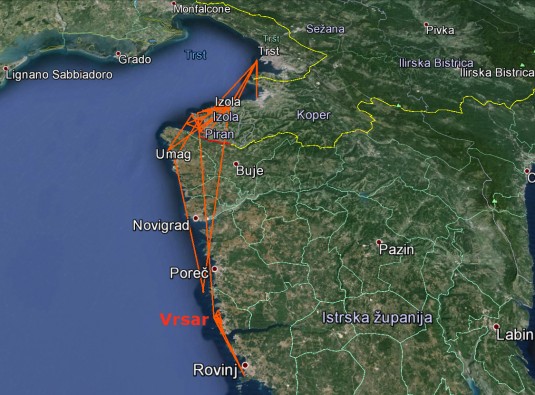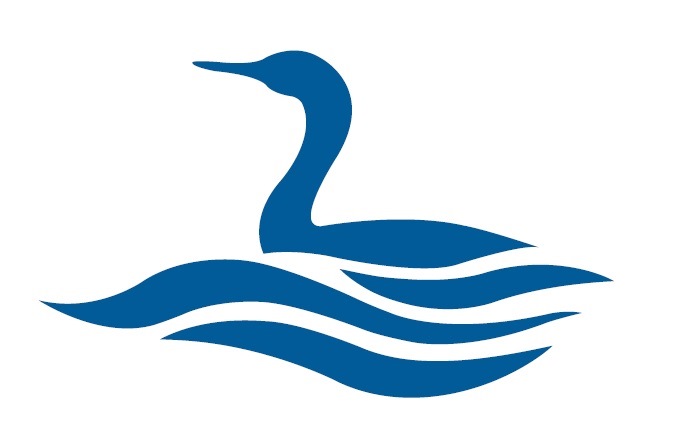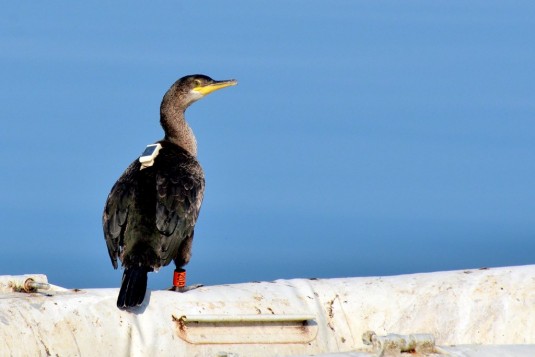Jakomo is the 6th Mediterranean Shag which was tracked on migration from Slovenian to Croatian sea. Jakomo flew to Istria in February, precisely in the vicinity of the town of Vrsar (Orsera). Its migration pattern is similar to that of the first migration of Mihi, who took a short trip to the same region a year earlier. They are both immatures of the same age and have often been seen together in Slovenian sea, but Mihi’s migratory achievements are more prominent: this winter it already migrated to Dalmatia and is the winner in the migration distance among the Shags we have been tracking.
 “In the area where Jakomo is roaming I was spending long summer holidays as a child and thus know every corner of that bay. It’s exciting to follow all these Shags who spend the winter in places where many Europeans go for summer holidays. Many Shags bring up their broods on rocks where we will be sunbathing a few months later,” said the coordinator of the project SIMARINE-NATURA, Urša Koce.
“In the area where Jakomo is roaming I was spending long summer holidays as a child and thus know every corner of that bay. It’s exciting to follow all these Shags who spend the winter in places where many Europeans go for summer holidays. Many Shags bring up their broods on rocks where we will be sunbathing a few months later,” said the coordinator of the project SIMARINE-NATURA, Urša Koce.
However, Croatian coast is being visited by turists even outside summer season ever more frequently. We’ve been informed recently about a Shag with a GPS logger which was observed last October on one of the Kornati islands by Slovenian sea-kayakers. This was one of the individuals which we don’t follow anymore due to the failure of its logger. Observation data about Shags tagged with GPS loggers are especially prescious because most of the loggers have stopped working by now. Perhaps you are going to trace one of these? If you see it, focus on an orange ring on Shag’s right leg. If you can read the black code, please write it down and send it to us together with the date and location (simarine.natura@gmail.com). And if you manage to take a photo of the Shag, even better!
However, we would like you to be cautious: if you meet a breeding colony of Shags or other seabirds on remote islands or coast, do not disturb them and try to withdraw as soon as posible. Breeding seabirds are extremely sensitive to disturbance and sites where they can hide from humans are becoming rearer and rearer.










